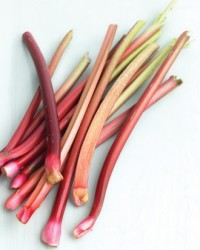
March 23- March 29, 2014
Market Outlook
Lettuce:
The Iceberg market is steady. We are seeing good quality on inbound. Iceberg and leaf lettuce has begun to transition to the Huron growing area.
Leaf:
Romaine is steady to up a few dollars in cost. Green and red leaf market is steady at lower levels. Overall quality is good.
Broccoli:
Broccoli market is active. Yuma is done for the season and Salinas is just getting under way. Product is expected to come up short in the coming weeks and perhaps gap. Quality has been very good.
Cauliflower:
The cauliflower is steady to higher depending on growing area. Product is available mainly in Salinas. Quality has been good.
Carrots:
Carrot market is steady with good quality out of Georgia.
Celery:
The Celery market is steady out of California and Florida. We are seeing good quality out of both California and Florida.
Strawberries:
Strawberry market is steady on Florida fruit, but we are seeing quality fall off. We will likely transition back to California fruit over the next week or two.
Potatoes:
The market on potatoes has gone up and will continue to go up for the remainder of the season.
Onions:
The market on onions is very active. We expect this to continue for at least 3 to 4 weeks yet.
Citrus:
The Lemon and Orange market remains steady with good quality. Lime market is very active with record costs due to a demand exceeds supply situation.
Cucumbers:
The Cucumber market is steady to stronger. Quality has been fair to good.
Peppers:
Pepper market is much stronger with limited supplies in the both the East and West. Availability will very tight in the coming weeks.
Tomatoes:
Round Tomato market is active and dollars higher with very few available. Grapes and cherries are a few dollars higher, and romas are also moving up. Quality has been very good.
Feature of the Week
This week Primo is featuring rhubarb. Rhubarb is often dubbed the “pie plant,” and the stalks, soft and delectable when baked, do make a divine pie filling. But pie is by no means the only way to experience rhubarb. This tart vegetable is as delicious in a savory dish as it is in a sweet one. Different varieties of rhubarb produce different shades of red to pink to greenish rhubarb stalks, however all are equally suitable for eating. Most commonly rhubarb is cooked, stewed, or baked into pies, breads, muffins, cakes, and other scrumptious desserts.
Recipe of the Week
Pork Chops with Rhubarb-Cherry Sauce
Ingredients
1/2 cup dried cherries
1 tablespoon balsamic vinegar
1 teaspoon plus 2 tablespoons olive oil
1/2 cup finely chopped onion
8 to 10 ounces rhubarb, ends trimmed, cut crosswise into 1/2-inch pieces (2 cups)
3 tablespoons sugar
Pinch of ground nutmeg
Coarse salt and ground pepper
4 pork loin chops, (each 1/2 inch thick and 6 to 8 ounces)
Directions
Step 1
In a small bowl, combine cherries with vinegar and 1/4 cup hot water; let stand 10 minutes to soften.
Step 2
In a small saucepan, heat 1 teaspoon oil over medium-low heat. Add onion; cook until softened, stirring occasionally, about 10 minutes.
Step 3
To the saucepan, add cherry mixture, rhubarb, and sugar; bring to a boil. Reduce heat; simmer until rhubarb has softened, 5 to 8 minutes. Stir in nutmeg; season with salt and pepper. Remove from heat; keep warm.
Step 4
Generously season both sides of pork chops with salt and pepper. In a large skillet, heat remaining 2 tablespoons oil over medium-high heat. Cook pork (in two batches, if necessary, to avoid crowding the pan) until browned and cooked through, 3 to 4 minutes per side. Serve topped with warm sauce.
Fun Facts of the Week
- Ben Franklin is credited with being one of the first people to send rhubarb seeds to the American Colonies.
- Rhubarb is low in calories, low in fat, cholesterol free, and is high in fiber, providing approximately 5 grams of fiber per cup of cooked rhubarb. Rhubarb also contains vitamin A, potassium, and calcium. One cup of cooked rhubarb contains as much calcium as a glass of milk!
- Rhubarb leaves are toxic. They contain oxalic acid.
- In previous centuries, rhubarb was cultivated almost solely for its medicinal uses.
- Fresh, tender rhubarb stalks can be eaten raw, but they have a tart flavor. If rhubarb is consumed raw, it is usually dipped in sugar


